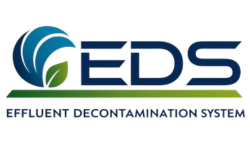Effluent Treatment Plants: A Comprehensive and Detailed Guide

Your Guide to Effluent Treatment Plants
Effluent Treatment Plants (ETPs) are essential infrastructures designed to treat wastewater originating from industries, commercial businesses, and municipalities, ensuring that contaminated water is properly purified before it re-enters the environment. This comprehensive guide expands upon the fundamentals of effluent treatment plants by providing detailed explanations, practical examples, and insights into the processes involved, environmental impacts, emerging technologies, and best maintenance practices.
What Are Effluent Treatment Plants?
An Effluent Treatment Plant is a structured system comprising several treatment stages that collectively work to cleanse wastewater by removing harmful contaminants, pollutants, and suspended solids. These plants help industries and municipalities meet regulatory standards and protect aquatic ecosystems by ensuring the effluent discharged is safe.
Why Are Effluent Treatment Plants Important?
The importance of ETPs goes beyond regulatory compliance. Here's why they are critical:
Protection of Water Resources: Untreated wastewater carries toxic substances, heavy metals, and biological pollutants that can contaminate rivers, lakes, and groundwater. ETPs mitigate this risk by cleansing effluents.
- Public Health Safeguarding: Properly treated water reduces outbreaks of waterborne diseases such as cholera, typhoid, and dysentery, thereby protecting communities.
- Environmental Sustainability: Recycled wastewater lessens the burden on freshwater resources, promoting sustainable water management.
- Economic Benefits: By reclaiming water and reducing pollution fees and penalties, ETPs contribute to cost savings for industries.
Detailed Processes Involved in Effluent Treatment Plants
An ETP typically involves multiple treatment stages that can be broadly classified into primary, secondary, and tertiary treatments.
Primary Treatment
Primary treatment focuses on the physical removal of large solids and suspended matter from wastewater.
- Screening: Large debris such as leaves, plastics, and grit are physically removed by screens to prevent damage to equipment downstream.
- Sedimentation: Water is held in sedimentation tanks allowing heavier solids to settle as sludge.
Example: In a textile industry ETP, primary treatment removes fabric fibers and suspended dyes that would otherwise impede later processes.
Secondary Treatment
Secondary or biological treatment focuses on decomposing dissolved and suspended organic matter using microbial activity.
- Aerobic Treatment: Microorganisms in oxygen-rich conditions metabolize organic pollutants producing carbon dioxide, water, and energy.
- Anaerobic Treatment: In oxygen-lacking environments, bacteria break down organic matter producing biogas (methane) useful as energy.
Example: Pharmaceutical ETPs use activated sludge processes with aeration tanks to degrade organic pharmaceutical residues.
Tertiary Treatment
This advanced stage removes residual contaminants including nutrients and pathogens to meet stringent discharge standards.
- Chemical Treatments: Coagulation and flocculation help aggregate fine particles.
- Filtration: Sand filters or membrane filters remove remaining suspended solids.
- Disinfection: Chlorination or ultraviolet (UV) treatments kill pathogenic microorganisms.
Example: Municipal ETPs often rely on UV disinfection to ensure safe potable water reuse.
Types of Effluent Treatment Plants with Applications
Industrial ETPs
Tailored to specific industries based on effluent characteristics:
- Textile: Focus on removing dyes and chemicals.
- Chemical: Treat hazardous substances and heavy metals.
- Food and Beverage: Handle organic loads and fat/oil separation.
Municipal ETPs
Designed for large-scale treatment of sewage and domestic wastewater to protect public health and reduce pollution.
Zero Liquid Discharge (ZLD) Systems
ZLD plants aim to eliminate liquid discharge entirely by recovering water and converting waste into solid byproducts.
Case Study: A leading Indian textile firm implemented ZLD, reducing water use by 90% and recovering salts and dyes for reuse, significantly cutting costs and pollution.
Environmental Impact of Effluent Treatment Plants
ETPs play a decisive role in minimizing pollution and conserving aquatic life.
- Reduction of Toxic Loads: Removes heavy metals and chemical toxins harmful to aquatic flora and fauna.
- Preventing Eutrophication: By removing excess nitrogen and phosphorus, ETPs prevent algal blooms that deplete oxygen in water bodies.
- Greenhouse Gas Mitigation: Some ETPs capture methane produced in anaerobic treatments, converting it to energy, thus reducing emissions.
Emerging Technologies in Effluent Treatment
With evolving environmental standards and resource scarcity, innovative technologies are enhancing ETP performance:
- Membrane Bioreactors (MBR): Combine biological treatment with membrane filtration to produce high-quality effluent suitable for reuse.
- Advanced Oxidation Processes (AOP): Use strong oxidants and UV to break down persistent organic pollutants.
- Automation and Smart Monitoring: Real-time sensors and control systems optimize chemical dosing and aeration, improving efficiency and reducing costs.
Maintenance Best Practices for ETPs
Consistent and proactive maintenance is crucial for reliable plant operation:
Regular Inspections: Check screens, pumps, and aerators to prevent blockages and mechanical failures.
- Sludge Management: Timely removal and treatment of sludge to avoid secondary pollution.
- Chemical Monitoring: Maintain correct dosing and storage of reagents.
- Calibration of Sensors: Ensure accuracy of flow meters and quality analyzers.
- Staff Training: Equip operators with updated knowledge to handle process adjustments.
Example: A pharmaceutical plant reduced downtime by 30% after implementing a digital maintenance log and predictive analytics to preempt equipment failures.
Conclusion
Effluent Treatment Plants are indispensable in modern environmental management strategies. Their ability to transform harmful wastewater into reusable resources protects ecosystems, public health, and supports sustainable development. Embracing emerging technologies and rigorous maintenance can further enhance their effectiveness, paving the way for greener industries and cleaner communities.
If you're looking for a reliable effluent treatment plant for your business,
get in touch with our friendly team today to see how we can help your business!

